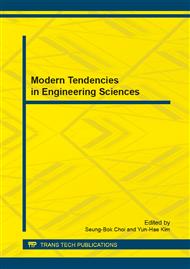p.401
p.411
p.415
p.423
p.427
p.432
p.436
p.440
p.444
Similar Execution Path Generation Based on Backward Symbolic Analysis
Abstract:
Similar execution paths generation is one of the fundamental tasks in code analysis and detection. The current methods usually target to the program behavior or program structure, and change the value of key predicates, but these methods has a low effectiveness due to the lack of the necessary guidance information, Meanwhile, the predicates set has a large size and usually hard to solve, thus it will reduce the analyze precision as well. A technique of similar execution paths generation based on dynamic synergy bidirectional mapping is proposed in this paper. According to extend the shape of Control Flow Graph and use the backward symbolic analysis, the weakest precondition of the candidate path is generated, which can be used as the guidance information to generate pointed similar execution paths set according to the edit distance via changing the distance factor. The experimental results show that this method has the advantage of precision and anti-inference.
Info:
Periodical:
Pages:
427-431
Citation:
Online since:
February 2014
Authors:
Price:
Сopyright:
© 2014 Trans Tech Publications Ltd. All Rights Reserved
Share:
Citation:


